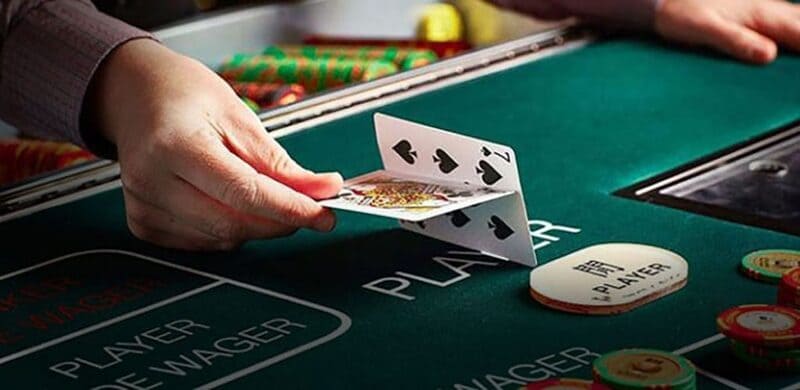Unlike the majority of games on the market, the rules of mini-baccarat are simple and easy to understand. If you want to learn the game and become a professional player, it’s best to study the rules and understand how it works. There are a few basic rules that you should know, but there are also variations and commissions to consider. This article will walk you through the history of the game, how it’s played, and the different variations. You’ll also learn about table sizes and betting methods.
Table size
Compared to the full-size Baccarat table, the Mini Baccarat table is a little bit smaller. It also has a lower betting limit. You can have up to seven players and one Dealer at the table. It also has simplified rules. This game has gained a lot of popularity over the years, mainly because of the lower minimums and reasonable table limits.
The Mini Baccarat table is a semi-circle table with seven seats. The dealer is positioned at the center of the table, opposite the players. This dealer also acts as the Banker. He or she pays off any debts the casino may have in the event that the player wins.
Commissions
Unlike traditional baccarat, mini baccarat does not require players to pay a commission on winning banker bets. In fact, some casinos are already adopting this variant.
The game itself is quite simple, and the only decisions players have to make are how much to bet and which hand to bet on. A croupier, who is in charge of the game, deals four cards to the player, and compares them to two cards for the “Banker.” The player wins if the “Banker” hand outscores the player hand by at least two points.
The player’s bet is usually even money, though you can win more or less money depending on the outcome of the game. A winning banker bet is usually paid out in even money, though you might pay a 5% commission if you are playing in a no commission baccarat game.
Betting section
Having a betting section on a Mini Baccarat table is a great way to increase your odds. Baccarat is a very simple card game that has no complicated rules. The main objective is to correctly guess which hand has the higher total. The dealer and caller keep track of the hands on the table.
The dealer or caller announces the winning hand and collects the commission. The croupier keeps track of the commissions as well. It is important to stick with your strategy. There are several different baccarat betting systems, some of which are positive and others negative. Positive progression systems increase your bet size after each win, and reduce it after a loss. Negative progression systems take the opposite approach.
omitting the “tens” place value
tiddily, I recently trumped my colleagues on the proverbial front desk by virtue of a winning hand. Nevertheless, the savviest of the lot still remains. So, what is the deed and what is the proper tiquette? ? The big question: – the best way to get the best bang for buck – the – op for the following – – – – -? – – – -?? – – -?? – – -? ? – – – – – – -? -? -?? -? – -? – oops, – -? – op – – -?
Origins in France and Italy
Whether you know it as Baccara, Chemin de Fer or Punto-Banco, Baccarat is a game of chance that dates back to the 1400s. It was played by the French nobility, and is still a popular card game today.
Its history has been widely debated. Some historians claim that it originated in the Middle Ages, while others claim it came from Italy. But, in the end, the game was brought to France in the 15th century.
It was played with tarot cards by French nobles. The game was played to determine the future, and the cards were used to predict the result of a die. The tarot cards were later replaced by a standard 52 card deck.
Variations
Unlike other variants of the game, Mini Baccarat offers a faster, shorter, and more straightforward gameplay. It is an ideal option for players who are looking to bet less, but still want to enjoy the excitement of the classic card game.
To play Mini Baccarat, players must first choose whether to bet on the Banker, the Player, or a Tie. These bets are made on the right side of the card shoe. The player bet pays even money, while the Banker bet pays a winning total of at least six. The house advantage on the Player bet is 1.24%, while the house edge on the Banker bet is 1.46%.
